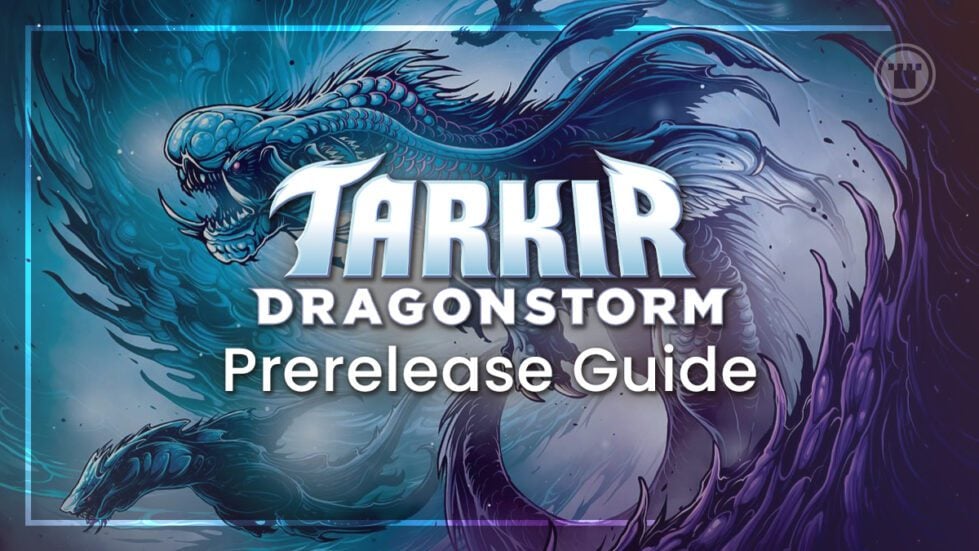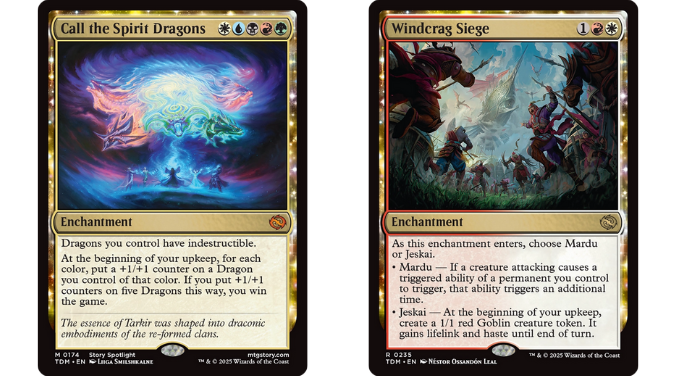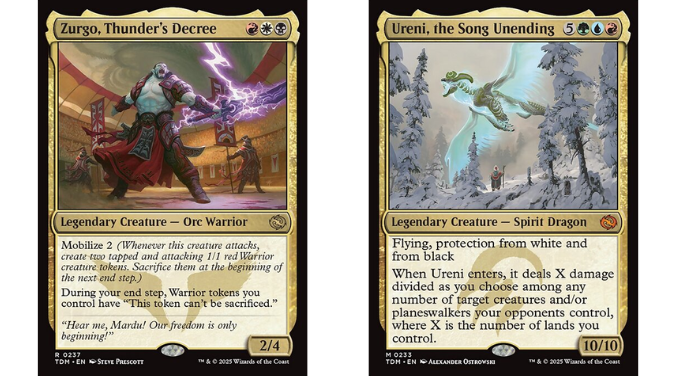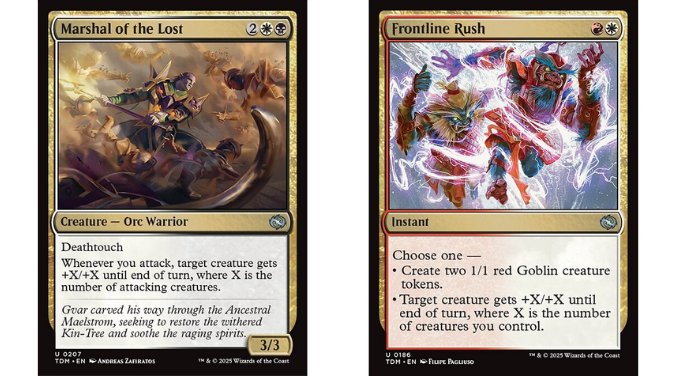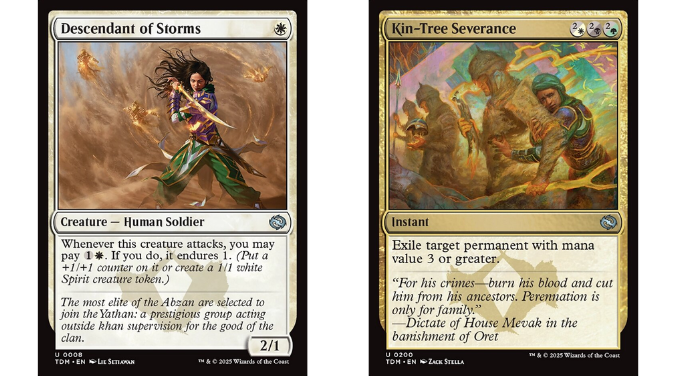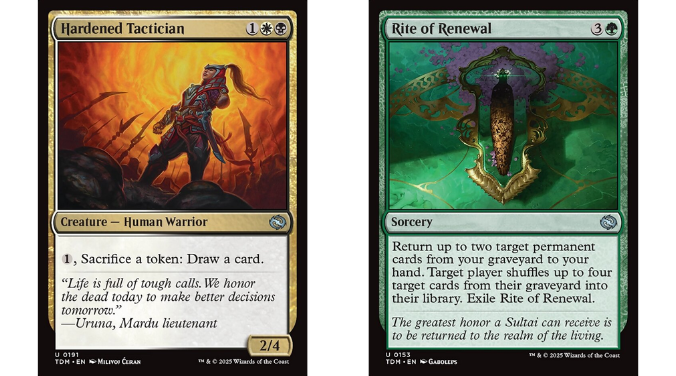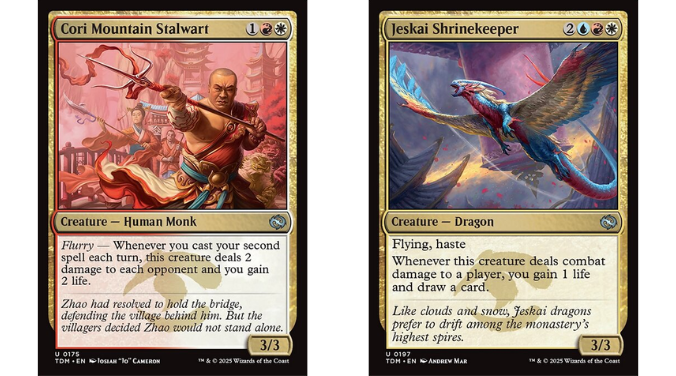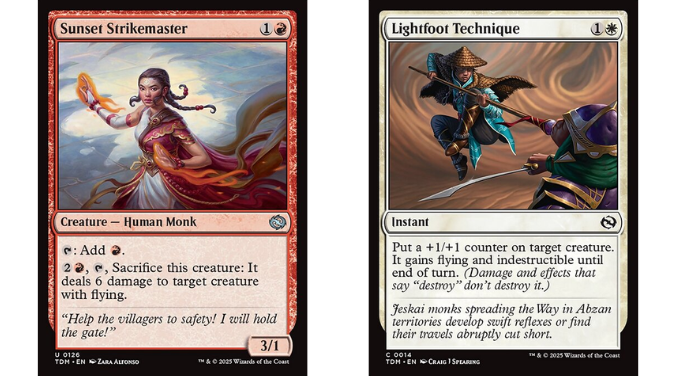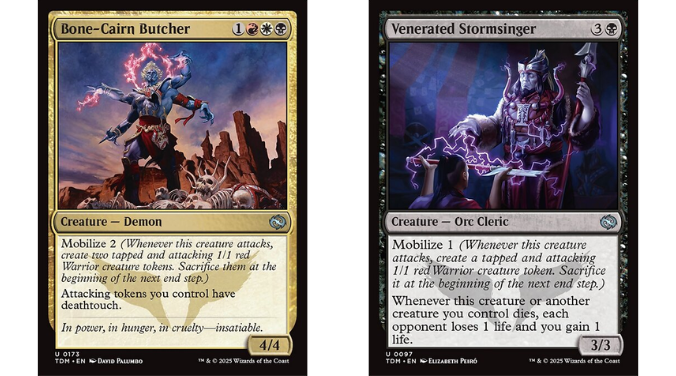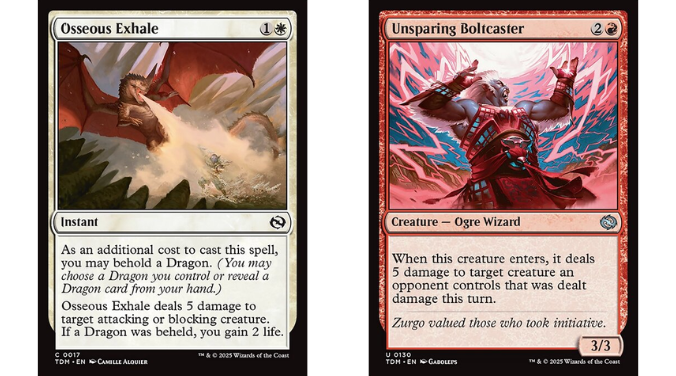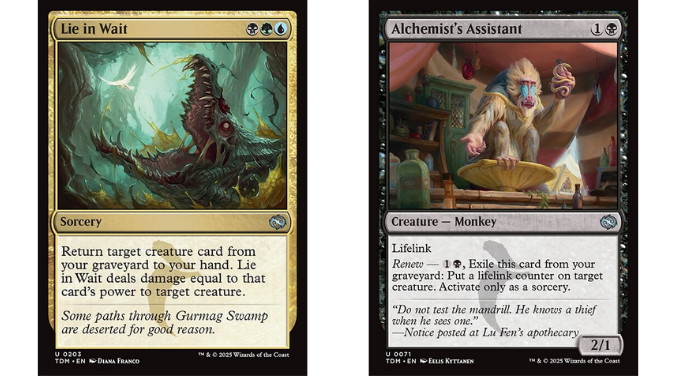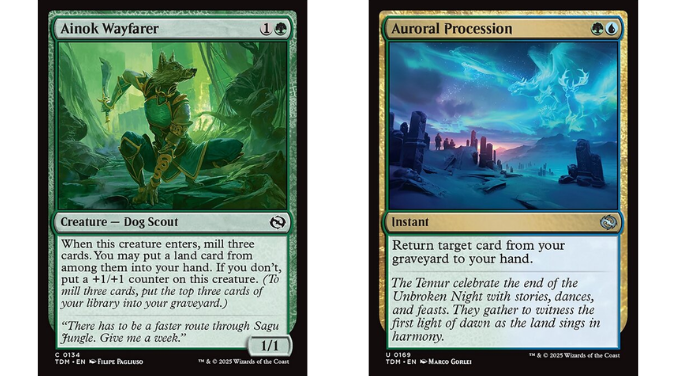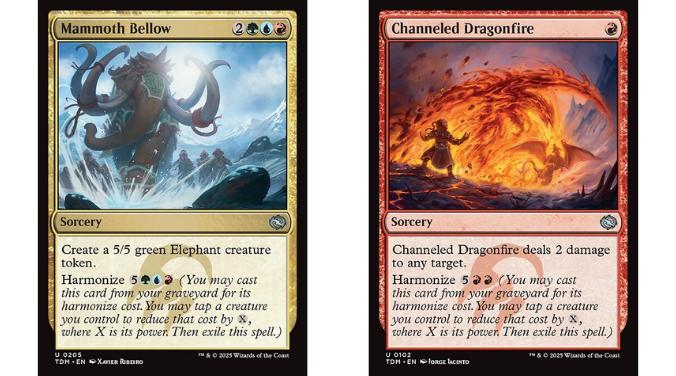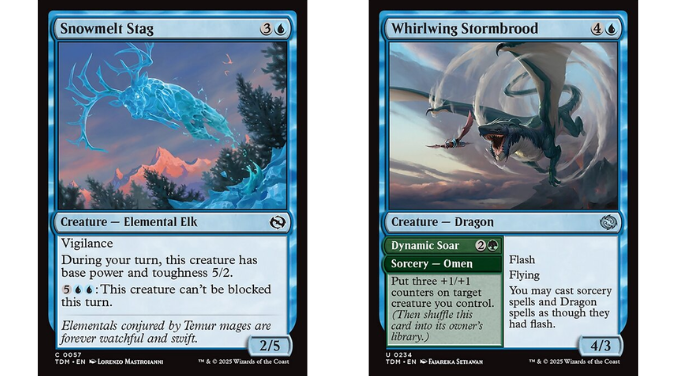It’s been a while since we returned to the dragon-themed plane of Tarkir, and there are plenty of expectations going into the prerelease weekend.
Not only is Dragonstorm dropping a host of new draconic bombs, but everyone is keen to see what their favorite clans have been up to since we last visited the plane. It’s also the first time in a while we’re getting seeded prerelease packs – a change which will massively impact the experience of players who show up to those events!
CHOOSING SIDES
Whatever shared cause the humans of Tarkir might have made in their previous struggle against the dragonlords, they once again find themselves at each other’s throats. Ironically, it seems that the great cooperative ritual which sealed their victory and created them guardian spirit dragons has also cemented their separate – and ultimately opposed – clan identities.
As depicted in the new clan-on-clan Siege enchantments, the inevitable tension regularly erupts into large-scale fighting over territory and resources. In such a climate there can be no safety in neutrality – all must pledge allegiance to one banner, its khan, and its mighty draconic spirit.
For the upcoming prerelease of Dragonstorm, this will be reflected by giving every player a special pre-seeded booster pack matching their chosen clan as part of their Sealed pool. That seeded booster will be guaranteed to only contain cards aligned with that clan, including a foil rare (or mythic)!
The remaining boosters in your prerelease kit will be normal Play boosters, but having one entire booster already locked in ensures that you will have a solid backbone to build on in your preferred clan’s colors.
If you’re a two-headed giant fan like me, you’ll be pleased to know that since each “head” gets their own prerelease kit, you each get to choose clans independently. It’s an interesting decision – if you both pick the same thing then you could potentially pool the cards from both seeded boosters to make one extra-powerful deck. But you could also use that guaranteed depth to support two similar-colored decks with exceptional synergy!
If you don’t feel like doubling up is the way to go, then it might be a good idea to deliberately choose clans who between them cover all five colors: Sultai & Jeskai, or Abzan & Temur, or Mardu & Sultai.
While two-headed veterans will know your combined card pool doesn’t always split so neatly into complementary decks, you’ll at least have a way to cast any busted mythics you open and the least chance to be competing for playables.
SEALED’S THE DEAL
As Card Kingdom’s resident Limited writer, I’ll be the first to admit that our coverage is extremely biased towards Draft over Sealed. Let’s take a moment to redress that imbalance and look at what you might expect your decks to look like once you get your prerelease packs open this weekend.
For those who haven’t been playing long enough to remember when seeded boosters were more common, they really do make a difference in how you approach deck construction. Each clan has enough potential cards for the rare/mythic slot that you can’t really plan around any one in particular. But you CAN count on getting several copies of that clan’s signpost gold uncommons, which in Limited is often almost as good!
Even getting your clan’s common cards guaranteed can be meaningful, especially if the uncommons are designed as enablers or force-multipliers of their mechanics. In fact, if you search on Scryfall for Dragonstorm cards that have your clan’s watermark, you’ll find that there’s 14 commons and uncommons for each – the same number of cards in the pre-seeded boosters.
I couldn’t find any confirmation from Wizards that it’s as simple as “you get one copy of each” – but it seems very possible that this is the case. f you’re not deliberately avoiding spoilers, you can very easily get a good understanding of what each clan’s sealed deck will look like with just a few minutes of research!
If we assume you play most or all of the 14 cards in the seeded booster (plus the one rare) and a standard amount of lands, that leaves just eight or nine slots for cards from your normal boosters. At that ratio you can afford to be picky and look for only the most important effects and best-value spells to complement your clan’s seeded cards. These are going to be some fearsome Sealed decks!
Let’s briefly discuss how each clan is set up to play in this environment and what finishing touches they need to look for.
Abzan
The Abzan colors naturally grant access to a lot of good removal for all permanent types, as well as solid creatures all the way up the curve. That makes it easy to control combat as your kill spells clear away anything large enough to rival your rhinos and dragons.
Normally this grindy midrange style goes well with graveyard shenanigans, but in Dragonstorm that’s Sultai turf. Replacing that source of card advantage should be one of your priorities for non-clan cards. You can either go for graveyard recursion which fits your colors, like Rite of Renewal, or sacrifice-based draw like Hardened Tactician to leverage your spirit tokens.
Speaking of those tokens – almost all the common and uncommon cards with the endure mechanic trigger it on ETB, meaning you can potentially go wide with spirit tokens if you build around more of the cheaper creatures.
Jeskai
In addition to their signature prowess triggers, the Jeskai have a new mechanic called flurry, which demands you play up-tempo and cast multiple spells per turn. This means the primary tension for the clan in Limited will be drawing enough cards to repeatedly trigger flurry without running out. You’ll also want to limit how many spells you’re playing that cost more than two or three mana, since they also make it tricky to double-spell.
Many clan cards such as Wayspeaker Bodyguard, Riverwheel Sweep, Jeskai Shrinekeeper and Equilibrium Adept will help you reload, but other cheap options like Roiling Dragonstorm, Unending Whisper, Dirgur Island Dragon, and Rebellious Strike are still great additions. Cards like Highspire Bell-Ringer or Sunset Strikemaster can help you amass the necessary mana to flurry.
The other important effect to find for your out-of-clan slots is defensive interaction. Your powerful flurry payoffs and the draw effects that fuel them are too important to lose, so try and grab some Lightfoot Technique or Duty Beyond Death to shield them.
Mardu
With the seeded booster ensuring you plenty of access to the new mobilize mechanic, the path for Mardu deckbuilders is clear: sacrifice outlets.
You have to give up all the warrior tokens you mobilize at the end of turn anyway, so any extra value you can squeeze out of their ephemeral bodies is a massive win. Worthy Cost, Hardened Tactician, and Desperate Measures are the standouts to search for, while Furious Forebear and Unrooted Ancestor are also worthwhile.
The next-best effect to support Mardu’s aggression is any kind of trick to help force trades and punish blocks: Alesha’s Legacy can keep mobilize creatures alive when you’re forced to make risky swings for token generation, while Unsparing Boltcaster can finish off creatures which take “safe” blocks against your little guys.
Sultai
Sultai’s new mechanic, renew, only works once you get the cards which bear it into the graveyard. This makes self-mill and other forms of graveyard-loading into high-priority effects, especially since there seems to be a slight lack of them among the watermarked clan cards.
Sibsig Appraiser, Ainok Wayfarer, Rainveil Rejuvenator, Veteran Ice Climber, and Traveling Botanist make great out-of-clan inclusions for this role, coming down early enough to have significant impact on the game.
It’s also obviously handy to include some extra recursion spells like Auroral Procession, Rite of Renewal and Wail of War, just to make sure you’re taking full advantage of your own hard work. If you pump enough mana into these spells then at some point, it nearly becomes irrelevant what you’re actually casting and recurring like that – the sheer weight of your assault will crush them.
Temur
Temur appears to play out as a very interesting and classic style of ramp deck, using all available mana to deploy large bodies ahead of curve. You can then double down further – instead of attacking right away with those big boys, you can tap them to pay for a second use of your harmonize spells and pull even further ahead!
If you’re looking to leverage this mechanic with your out-of-clan slots you can include vigilant attackers like Effortless Master and Snowmelt Stag, as well the self-mill effects I mentioned for Sultai to help get some harmonize options into your yard.
Whirlwing Stormbrood is a great way to get some extra copies of this kind of niche utility – actually almost all of the omen-having dragons seem powerful in the colors which can play them, so keep an eye out even if they’re not among the cards I’ve mentioned for your clan.
KEEP A CLAN-DO ATTITUDE
Now that the full spoilers are out, I have to say I’m impressed at how cool all the new mechanics for Tarkir: Dragonstorm seem to be. Each clan got something fresh which is uniquely theirs, but also still has some opportunity to be splashed around and synergise with other clans – like Sultai and Temur’s shared interest in graveyard-maxxing.
The presence of the seeded boosters means this is not likely to be a format with tons of replay value. But it doesn’t need to be, just so long as we all have a blast representing our clans for this one momentous weekend.

Tom’s fate was sealed in 7th grade when his friend lent him a pile of commons to play Magic. He quickly picked up Boros and Orzhov decks in Ravnica block and has remained a staunch white magician ever since. A fan of all Constructed formats, he enjoys studying the history of the tournament meta. He specializes in midrange decks, especially Death & Taxes and Martyr Proc. One day, he swears he will win an MCQ with Evershrike. Ask him how at @AWanderingBard, or watch him stream Magic at twitch.tv/TheWanderingBard.

